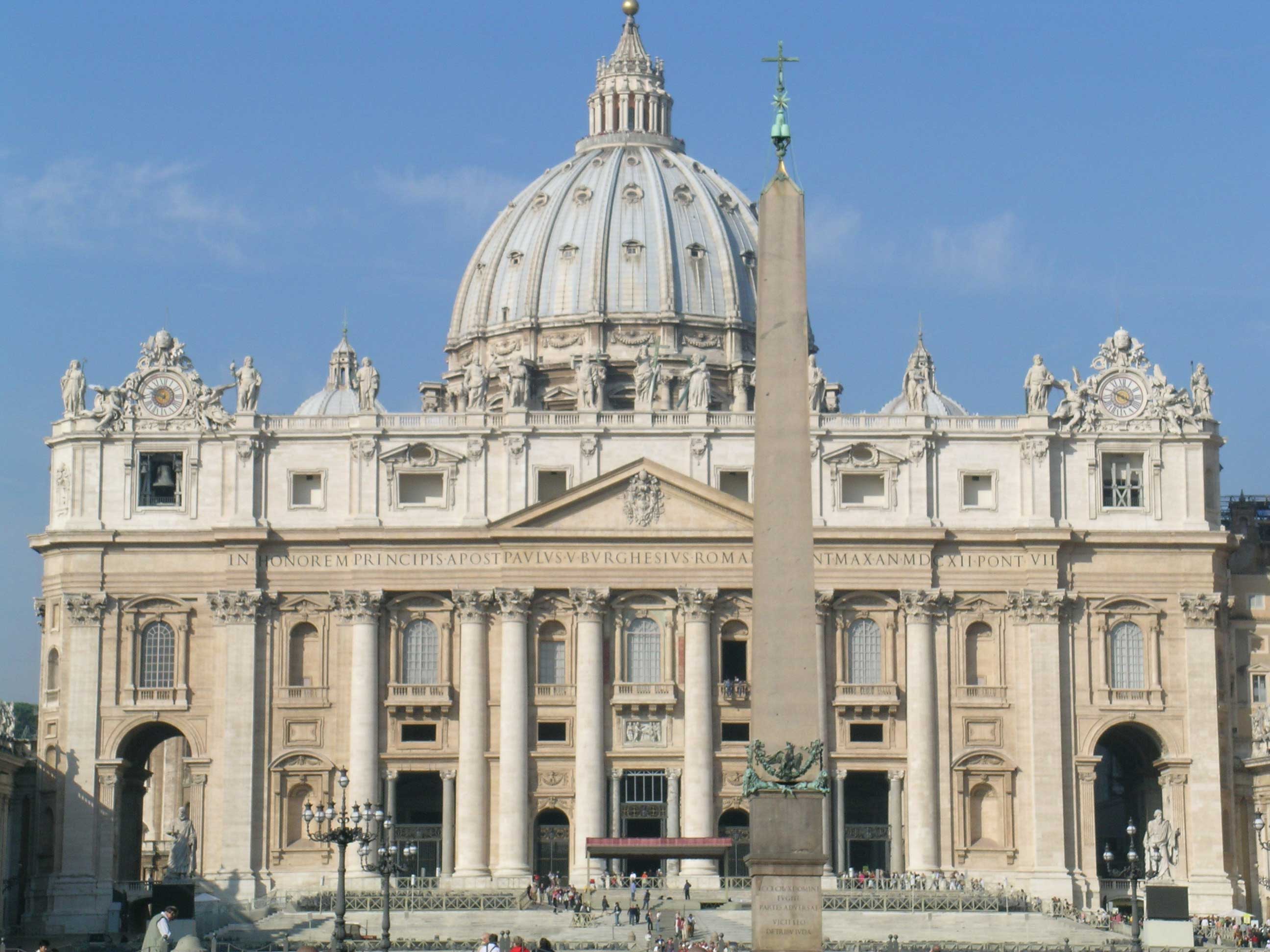The City of Paris has one of the most recognizable towers throughout the entire world. The Eiffel Tower was built in 1889 celebrating the 100th anniversary of the French Revolution. Contractor/artist of the Tower, Gustave Eiffel, led the construction which took 2 years, 2 months, and 5 days. The shape of the tower caused controversy in the beginning of its construction. Eiffel defended his project by proclaiming his mathematical calculation that promised wind resistance.
Another great structure, St. Peter’s Basilica, was completed in 1615. It is perhaps the largest church in the world. Located in Vatican City, the Basilica was built at the location where Peter, the first pope, was crucified and buried. Not only is this grand church acknowledged as one of the holiest sites, it is also the greatest of all churches in Christendom. The architect of the famous church was Donato Bramante and artists such as Michelangelo and Bernin helped in designing the dome and St. Peter’s Square.
The Eiffel Towers has undergone many architectural developments throughout history. Many developments have been added to the different levels on the first and second floors, such as pavilions and other constructions. Other expansions include the elevator and staircases. During the time of building, the use of iron and steel in bridges and building frameworks had become very popular. The tower was built using wooden scaffolding and small steam cranes mounted onto the tower itself. Rivets hold the metal pieces of the tower together.
St. Peter’s Basilica had a beautiful architectural design that has drawn in visitors from around the world. At 53 meters high and 116 meters wide stands the glorious facade designed by Carolo Modeno. Interestingly, the balcony known as the Loggio of the Blessings is where the announcements for each new pope is made. The magnificence of the facade is enhanced by the 13 statues representing, Bartholomew, James the Younger, John the Evangelist, Andrew, Christ the Redeemer, John the Baptist, James the Elder, Thomas, Philip, Matthew, Thaddeus, Simon and Matthias. The double dome is constructed of brick and reaches a height of 42.3 meters in interior diameter. Michelangelo, the architect of the dome, made the dome more of a parabola rather than a hemisphere. Corinthian columns were placed in to support the dome’s weight. The inner surface of the dome is coffered, creating the artistic effect of vertical and horizontal ribs that lighten the room. At the top is an ocular opening prividing light to the inside. The interior of St. Peter’s is magnificent and is considered to be one of the largest churches in the world. Over 60,000 poeople can be held in the church that covers an area of 5.7 acres.
The Eiffel Tower is also known for its breathtaking sight, all due to the creative architectural design of the building. The Eiffel Tower’s height reaches 324 m including the antenna. It held the position of the world’s tallest building until 1930. An interesting aspect of the Eiffel Tower is its movement; the force of wind causes the top of the Tower to sway 6 to 7 cm; heat also causes the top to move with a curve of 18 cm. The Tower weighs a total of 10,100 tons and has 1665 steps.
Both of these structures of history offer beauty to the world in a different way. Upon glazing at St. Peter’s Basilica one can understand its majesty by the beautiful designs, shapes, statues, etc. The Eiffel Towers, however, offers beauty that was at first hard to believe. At the time, people considered the great cathedrals and palaces to be built of stone with great ornamentation. But, iron being beautiful and spectacular on it’s own? The Eiffel Tower took iron from being being an underlying structure to a work of art.
St. Peter's Basilica, Rome
Eiffel Tower, France



No comments:
Post a Comment